Goldenrod is a superb plant for novice foragers to discover because it boasts a plethora of edible and other uses. But, this hardy wild “weed” does also have some potentially lethal look-alikes.
There are about 130 species of goldenrod plants. All of the species except one, white goldenrod, feature bright yellow blossoms. Each of the various species can be harvested for consumption, or for their natural healing uses.
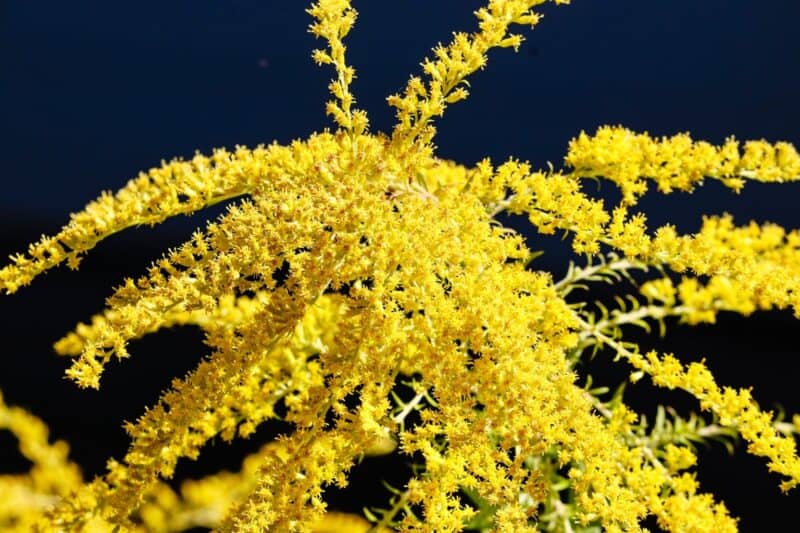
Goldenrod grows in the wild throughout North America, Europe, Asia, Canada, and South America. It is hardy in agricultural zones 2 through 9.
This wild plant is often foraged for its anti-inflammatory properties. It has been used both internally and topically to reduce swelling and to alleviate minor wounds. Goldenrod can be crushed and used either fresh or dried in poultices, salves, or tinctures to make soap, or placed in gel capsules for measured doses.
Leaves from the goldenrod plant have been used to brew tea and are cooked similarly to spinach. They’ve also been used in soups, stews, and casserole dishes.
Goldenrod is not an approved drug by the FDA. I am not a medical professional of any type. The ways that goldenrod has been used as a natural remedy are presented purely for educational and research purposes. Always contact your medical professional before embarking on a natural remedy routine. Simply because a product or foraged item is natural does not necessarily mean it is safe to use or will not cause an allergic reaction.
Goldenrod Facts
- The wild plant is an herbaceous perennial.
- Height when mature: 3 to 7 feet (91 to 213 cm)
- Solidago spp is the scientific name for goldenrod. It is from the aster or asteraceae family.
- Commonly used names for goldenrod species of plants include Aaron’s rod, woundwort, goldruthe, and solidago.
- Goldenrod was used to make a tea substitute in Boston after the history-changing tea party in 1773.
- Native Americans used goldenrod to sweeten the taste of natural medicine used to alleviate a host of ailments and conditions.
- There’s actually a variety (Solidago bicolor) that’s yellow-white!
- Goldenrod became popular as a tea after the Revolutionary War when it was exported to China, and sold at an exorbitant price.
What Does Goldenrod Look Like?
Here are some quick tips to help you identify goldenrod in the field…
Flowers
The flowers on goldenrod plants are only about ¼ of an inch wide.
The flowers grow in tight and lengthy clusters. These flowers can grow as an inflorescence or in a pyramid. While it’s most common for them to be about ¼” wide, they can sometimes be much taller (up to 16″ tall) and wider (up to 16″ wide, though this is also uncommon).
With the exception of white goldenrod, all the other species of this plant boast bright yellow flowers. The flowers come into bloom during the final weeks of July or in early August and continue on in this state until October – depending upon your growing zone.
Leaves
Goldenrod plant leaves have only slightly jagged edges and are smooth in texture. The plant leaves are typically not any longer than the base of the plant. Leaves on the goldenrod plant are smooth and have slightly jagged edges.
Stems
Goldenrod stems are sturdy and do not branch out like some of their potentially toxic look-alikes.
The long thick and durable stems on goldenrod have tiny spikes on them that might not be readily visible but can be felt when touching the stems.
Goldenrod plants can have multiple horizontal branches that hold multiple clusters of flower heads.
Where to Find Goldenrod
All species of goldenrod can be found growing in livestock pastures, hayfields, and in ditches along the side of the road in full-sun areas.
A few varieties of goldenrod prefer partial shade and seaside or mountain climates. The plant can be found in moist locations or even compost piles. It is a prolific grower that is found throughout the United States, Canada, and other parts of the world.
Height
Goldenrod typically stands about three to five feet tall. Some species of this misunderstood wild plant grow to only between 1 to 3 feet tall, and others can stretch as tall as 8 feet.
Is Goldenrod Really a Weed?
Yes, goldenrod is considered a weed because it tends to spread through self-seeding a lot and hinder your garden’s yields. But that doesn’t mean you shouldn’t harvest it, quite the opposite.
Types of Goldenrod
There are several goldenrod varieties you should consider (some are grown for ornamental purposes), such as:
- Golden baby
- Zigzag (Solidago flexicaulis)
- Golden sun
- Anise-scented goldenrod
- Dwarf
- Stiff goldenrod
- Fireworks goldenrod
- Blue-stemmed goldenrod
- Golden fleece
- Tall goldenrod (Solidago altissima)
Goldenrod Toxic Look-Alikes
Groundsel, ragwort, staggerweed, and liferoot are common names for plants in the Senecio genus that can closely resemble goldenrod at first glance. They are part of the largest genus of flowering plants known to man.
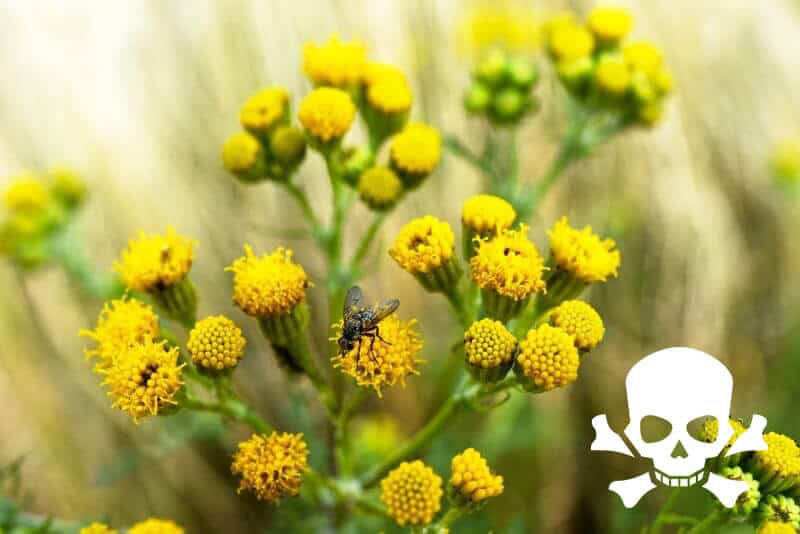
While not all members of the Senecio are poisonous, the ones that are known to be toxic container pyrrolizidine alkaloids – or PAs. These compounds can cause liver damage in both livestock and people.
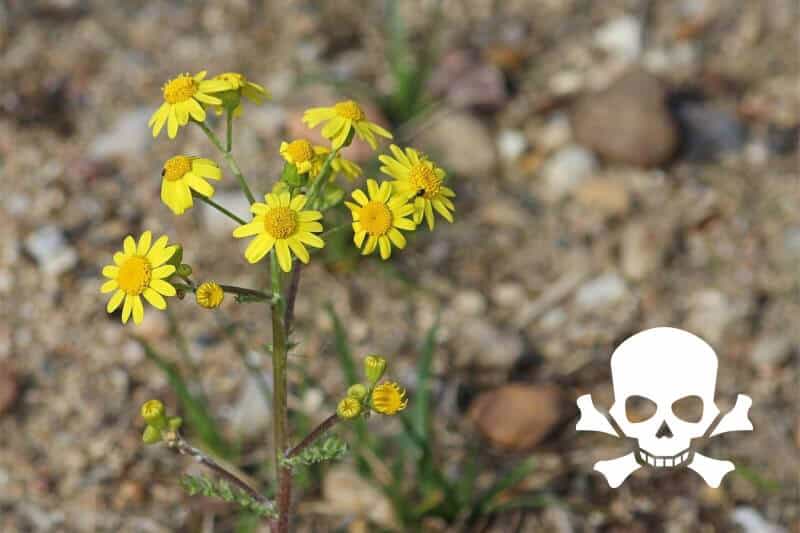
Exposure to PAs can go undetected or be misdiagnosed because their poisoning symptoms mimic those associated with many other types of more common illnesses. In severe poisonings, by the time poisoning symptoms present themselves, damage to the liver has always taken place.
I highly recommend crushing a goldenrod leaf on a properly identified plant and familiarizing yourself with the scent to help distinguish it from potentially toxic look-alikes. The resins in goldenrod leaves typically smell like a mixture of balsam, anise, salty (think oceanside), or licorice – or a blend of each.
Another plant that is often mistaken for goldenrod is ragweed (Ambrosia spp). In fact, goldenrod is often blamed for people’s seasonal allergies, since it looks so similar to ragweed (which is actually the plant responsible for their sneezing and scratchy throats). Ragweed has smaller pollen particles, while goldenrod is unlikely to blow its pollen into your sinuses.
That said, ragweed often grows side by side with goldenrod and blooms at exactly the same time. The best way to tell the plants apart is by the flowers.
Ragweed’s flowers are tiny and unexciting. They tend to be green or white-green instead of yellow, and unless you know exactly what you’re looking for, they’re hard to spot.
How to Harvest Goldenrod
To harvest goldenrod all you need to do is snip away the stem, leaves, or flower heads with scissors, a knife, or by breaking them away with your hand. All of the above-ground parts of goldenrod are edible and often used in natural remedies.
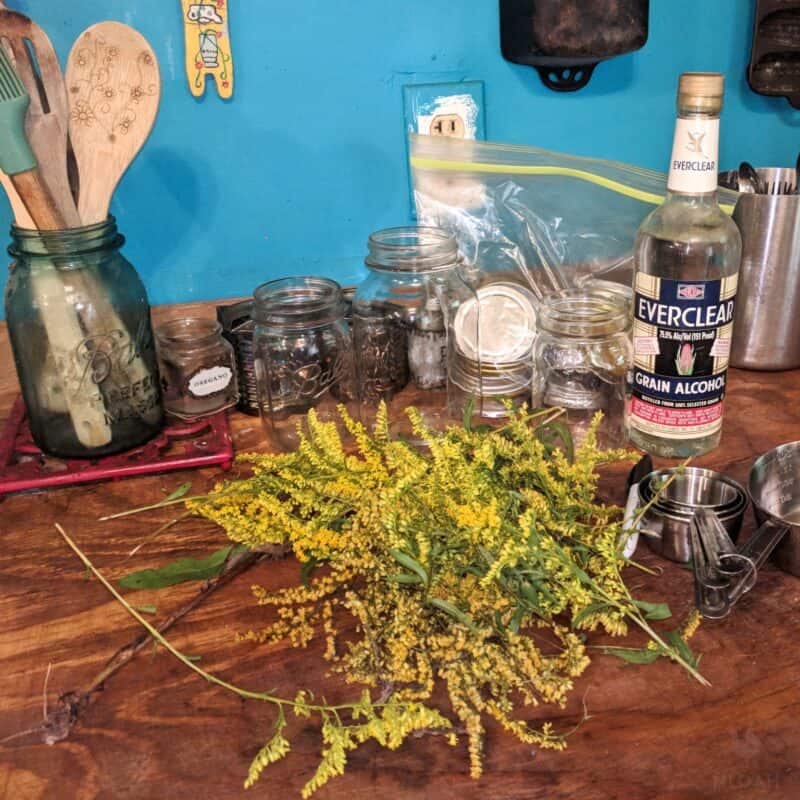
To avoid a slightly bitter taste, harvest the goldenrod just before or as soon as the flower clusters begin to bloom. This is the best place to cut, too – the flowering tops of the plant are the ones that you want. This is generally the top third to half of the plant.
Whatever you do, do not pull up the entire goldenrod plant by its roots. If you do this, it won’t regenerate – and since goldenrod is a perennial, you want to keep the roots in place so the plant can come back next year (better for the environment and for your future foraging self!).
The best time to harvest goldenrod is on a dry day, or when rain and dew aren’t remaining on the plant. Midmorning is the best time, ideally a partly cloudy or sunny day. That said, it’s not a big deal if the plant is still a bit wet – it will just take longer to dry.
How To Dry Goldenrod
You can dehydrate goldenrod flowers, stems, and leaves by separating them into fairly equal parts and putting them in the machine on the herb and nut setting. Depending upon the power of your machine, the drying process should be completed in approximately 4 to 6 hours.
Drying goldenrod thoroughly can also be completed inside a standard kitchen oven. Place the goldenrod plant parts on a baking sheet, and make sure none of them are touching. Bake the goldenrod for about 4 or 5 hours at 170 degrees F (76 C).
When hang-drying goldenrod, make sure to spread out any thick bunches of flowerheads and branches to ensure adequate airflow. Unless you live in a climate where humidity is intense or dealing with summer temperatures, the drying process typically takes only about a week.
How to Store Goldenrod
Once they are dried, goldenrod flowers should be stored in an airtight container like a Mason jar or a vacuum-sealed bag until ready to use. Store the containers in a cool spot out of direct sunlight.
Ideally, you can store goldenrod (or any foraged or preserved natural material) in multiple small containers to avoid exposing a large amount of dried material to unnecessary moisture on a repeated basis.
You can also store your goldenrod in brown paper bags…
Properly dried and stored goldenrod should remain viable for use for at least 9 months. If the flower heads show signs of significant fading or mildew, pitch the entire container and do not use either internally or topically.
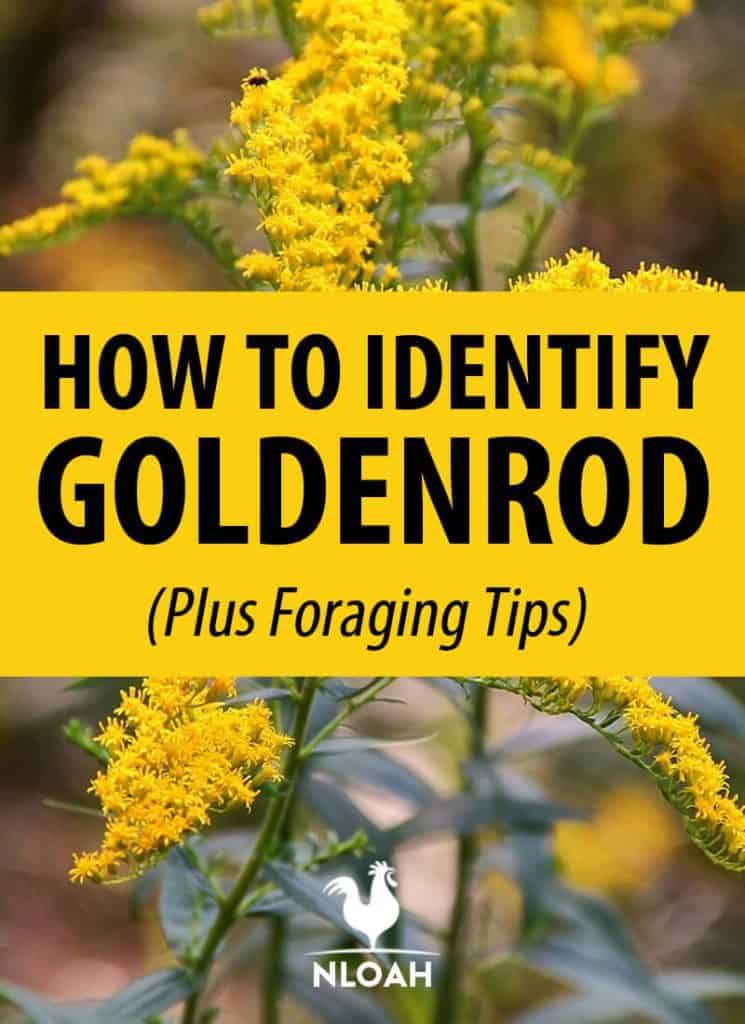

Tara lives on a 56 acres farm in the Appalachian Mountains, where she faces homesteading and farming challenges every single day, raising chickens, goats, horses, and tons of vegetables. She’s an expert in all sorts of homesteading skills such as hide tanning, doll making, tree tapping, and many more.

I don’t know why I have such a hard time with distinguishing the stems and leaves of tall asters from goldenrod before they flower, but I’m not sure what to look for specifically. I have plants that are about 5 feet high and some are goldenrod and some are asters, but until they bloom, I am not sure which is which.
Can you help me distinguish between them? Many thanks
Thank you for the photos!
You are welcome, thank you.
Excellent and informative article. Thank you!
I am glad you found it useful!
I am just getting into trying to make my own essential oils and so on and I have found this article very interesting and informative. Thank you for this post.
Glad you are learning some great new homesteading and self-reliance skills. I hope you have great success!